
Some of My Fondest Childhood Memories
Some of my fondest childhood memories are of Dad coming to get us on the Amtrak trains. Like many kids in Generation X, my parents divorced when I was young. Afterwards Dad settled down in the Capital Region of New York State, while we grew up in Buffalo. That’s where Mom was from and that’s where most of my childhood took place. But this story isn’t about that per se. It’s about a yearly ritual that came about due to this circumstance.
Waiting for Dad’s Letter and Traveling New York State by Train
Dad had visitation once or twice a year and as time went on, it ended up being in the middle or end of the summertime. As a preteen during those months, I’d watch the mailbox for a letter from Schenectady, NY, the Electric City. It was given that nickname because the General Electric corporate offices were based there. Before my parents split, we lived 20 minutes east in Albany, the state capital. I don’t know exactly why Dad settled in Schenectady, but he did.
Dad initially called Mom to announce his intention to come get us. A formal man, he used that word a lot, and eventually he just sent letters. They’d agree on the dates and the length of our visit, and then he’d show up. The early visits were by car. He’d drive five hours to Buffalo on Interstate 90 (I-90) in his red Volkswagen bug. He would take us to Schenectady, and then bring us back usually in two weeks. Then, at some point, he decided to come get us on the train.
I don’t know what made Dad decide to start using the train for our visits. It could’ve been the grueling four-to-five-hour drive to Buffalo. Maybe it was my love for trains. It developed when playing with the toy train sets Dad had. He had a miniature N scale train set, a medium sized HO train set and finally a Lionel train set with the third middle rail. His father, my grandfather whom I never met, constructed that HO train set we played with. Dad said his father had been a cook on the railroads.
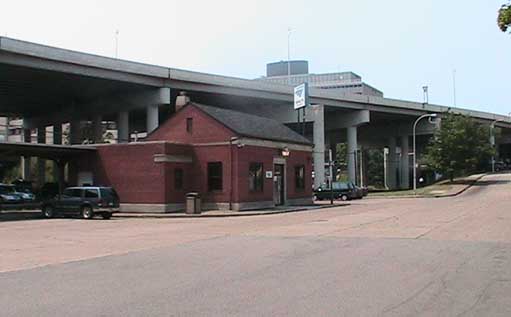
Making the Exchange at the Exchange Street Train Station
Mom agreed to drop us at the Amtrak Exchange Street station in downtown Buffalo. In hindsight, the street and station names were coincidental, but accurate. The station was underneath the Interstate 190 expressway (I-190), across from the Buffalo Bison’s Baseball Stadium. Dad typically arrived in town the day before and stayed at the Travel Lodge Motel on Main Street. He’d go out to the famous Anchor Bar to listen to jazz and get food. I’d be at home in bed, anxious to see him the next day and for the trip.
My most vivid memory of him meeting us at the station was a day when Mom, and her then boyfriend, got us there early. Dad wasn’t there yet, and I eagerly looked around for him. In the tiny station I looked out of the window and up the hill. I saw him turn the corner and got excited. He descended towards the station with his luggage dressed in his signature short sleeve button down shirt, slacks and shoes. I darted out of the station up the hill and jumped on him, while my older brother patiently waited in his seat. My parents were cordial during those exchanges.
“Now you know you have to come back to Buffalo in two weeks, right?” Now just the three of us, Dad sternly made sure that we understood the terms of the agreement he and Mom made for the visit. He especially made sure I understood.
Waiting for Our Train
We waited for the train to arrive. Our tiny station consisted only of a lobby, an enclosed office for the ticketing agent, restrooms, and vending machines. There was one exit to the station’s single track which was for the most part covered by shade from the I-190 skyway above.
Dad usually bought tickets for east/southbound Train No. 64, the Maple Leaf, which originated in Toronto, Ontario. When I studied the free paper schedules available in the station, I saw that it stopped at places like Grimsby, St. Catherines and Niagara Falls, Ontario before crossing over the border to Niagara Falls, NY, the stop before Buffalo. This passage through customs made the train late every time by an hour or more.
Most of the trains in the Empire Corridor had names and numbers. In addition to the Maple Leaf, there were train Nos. 283/284 the Niagara Rainbow, and train Nos. 48/49 the Lake Shore Limited. Both trains made journeys to Western New York and beyond from Grand Central Station, and back again. The even numbered trains were eastbound, and the odd numbered counterparts were westbound trains (Nos. 64 and 63, for example). Trains like the Bear Mountain and the Electric City Express only seemed to journey to the Albany area from New York City. Some operated daily while others operated on specific days. It was all fascinating to me.
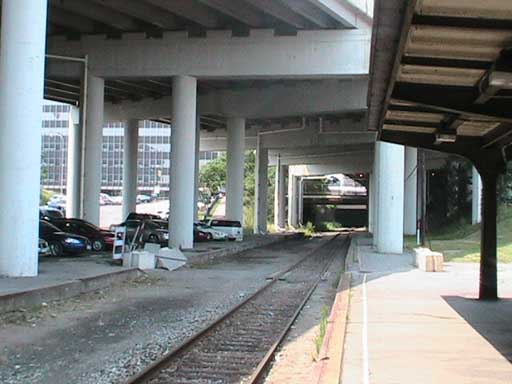
Seeing the Train Emerge from the Tunnel
The station attendant alerted us when the train was near, and we’d all file out onto the platform. Because the station sat below the skyway, you could hear the cars and trucks passing over head which created an ambient sound. I eagerly focused on the tunnel though, anticipating the arrival of the train No. 64. I still get butterflies thinking about it.
At that time there was one single track. To the west, it extended straight and then curved into the tunnel. Looking in the opposite direction from the platform, it extended eastward and then curved and disappeared in the distance behind a random building. At some point you could hear an increasingly intense hum which competed with the noise from the skyway. The hum was accompanied by the sound of an air horn, a very distinct high-pitched sound. The engineers typically blew it twice to let you know the train was approaching the station and to stand back.
The EMD-F40PH Engine Leads the Charge
Just then the tunnel lit up slowly as did the tracks at the bottom of it. And then the train appeared; a massive, large, gray, squared machine barreling towards us. There were two windows at the top of the engine car where the engineers sat, the engine’s cabin or “cab”. Two singular vertical running lights were at the front of the chassis, the ‘nose’ if you will. There were two more blinking lights below them on the right and the left, both flashing in an alternating manner. Red, white, and blue stripes wrapped around the body of the locomotive. In the front right half of the lower chassis, in those stripes, was the name Amtrak. The chassis was square shaped, unlike the General Motors (GM) Electro-Motive Division’s (EMD) classic FL9 passenger locomotives from earlier in the century. They were featured in movies like ‘Superman: The Motion Picture’.
After researching this, I later learned that this was a modern “EMD-F40PH” locomotive, also made by GM. Its distinct hum was accompanied by a loud bell which rung at a slow cadence as the locomotive rumbled past us like a goliath. The large beast of a machine literally shook the ground and kicked up dust and rubble as it slowed to an eventual stop. There was the distinct smell of the diesel exhaust fumes combined with the smell of the rails and the ties upon which the trains travelled. The side of the locomotive also read Amtrak, but in larger letters. As directed, we all stood behind the yellow line of the weathered platform, but you still felt the might of the engine.
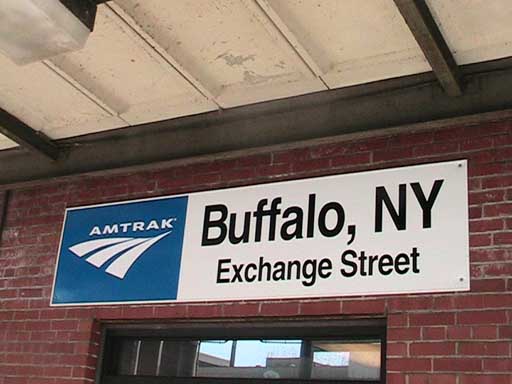
The initial final draft of this essay affectionately discussed the F40PH engines but had no pictures of them. Amtrak retired them years ago and I had no pictures of them. My mother edited this essay and pointed out that there were no images of the engines in the final essay. In the fall of 2022, I found an interesting channel on YouTube one night entitled, AmtrakGuy365. The content creator is one of many rail fans on YouTube and created impressive highly detailed historic videos on the engines used by Amtrak over the years. To get an understanding of my love for the F40PH engine, watch the following embedded video. Please read the rest of my essay as well. Also, salute to AmtrakGuy365.
The Regal Silver Amfleet
As the mighty locomotive emerged from the tunnel, you could see a sleek fleet of stainless steel, curved cars or coaches behind it. They also wore the same red, white, and blue stripes. These were Amfleet coaches built by the manufacturer Budd. They contrasted the locomotive because their sides were curved, not straight. Also, the body of the locomotive was a dull industrial gray. The top was painted black.
With the train stopped, you could still hear the hum from the engine down at the front end, but the cars made noises themselves. It sounded like a fan or something running similar to an air conditioner which made sense as there was machinery underneath each coach.
At each end there were four bare wheels with springs in the middle. Technically, these were the coaches’ trucks. In between these coaches were connectors through which people could pass. There were also the actual couplers connecting each coach, the air hoses and then electric cables running between each coach. Lining each car within the red, white, and blue stripes were rectangular tinted windows with round corners that were cut in half by separators.
Boarding the Great Silver Coaches
The complement of cars was typically five or six with one ‘café’ car. In the summer months, Amtrak extended the Maple Leaf Train to seven or eight cars, with two engines operating back-to-back when necessary. As the train slowed to a stop you heard another high-pitched sound, almost a whine, as the air brakes kicked in. As the train slowed, the doors at the ends of selected coaches slid open with conductors standing in their vestibules. They lifted hatches revealing stairways which unfolded down to the platform creating stairwells for the passengers. The conductors descended to direct and greet us.
“Schenectady is two cars down. If you’re going to Grand Central Station, get into the forward coaches. The food service car is at the center of the train,” the conductors would say. Most of them were men. You saw some female conductors on the Empire Corridor later, but most were men, both black and white. They wore military style hats, with Amtrak printed on them, short sleeve button down shirts, dress pants and shoes in the summertime. In the wintertime they wore overcoats.
Because the platform at the Buffalo Exchange Street Station sat at track level, passengers literally had to climb up into the coaches with their luggage, which was part of the fun. Looking down at the locomotive as I often did, I could see exhaust fumes emanating from its top side, like a whale and its blowhole. The interior of the coaches smelled like air freshener. The seats were a red color as were the coaches’ upholstery, and there were overhead racks for luggage. Sets of four facing seats were usually at the ends of each car near the restrooms. Because there were three of us, we usually sat there.
The conductors eventually came by and collected our tickets. They used some sort of hole punch and tore them in half. They then gave us each green, orange, or yellow generic Amtrak stubs with scribbles from a black magic marker which were placed above our seats signifying our destinations. Since we were going to Schenectady, our tickets read, SDY. On the return trips to Buffalo, they scribbled, BFX for Exchange Street, or simply BUF for the Depew station. Rochester was ROC and Syracuse was SYR. You get the idea. If you were going all the way to Grand Central Station, your stub read, GCT or NYC.

From One Single Track onto the Mainline, and from the Inner City into the Frontier
The ride itself was magical. The train took us from downtown Buffalo literally into the countryside. From the Buffalo Exchange Street Station to the Buffalo-Depew Station, we passed the old Buffalo-New York Central Terminal, then the Conrail train yard along Broadway, the Thruway Mall area and then out to the suburb of Depew. I was unaware of Depew until taking those rides. The single Exchange Street track literally merged with Contrail’s mainline right around the old Buffalo Terminal. From there we rode a two to four track network from Western New York to the Capital Region.
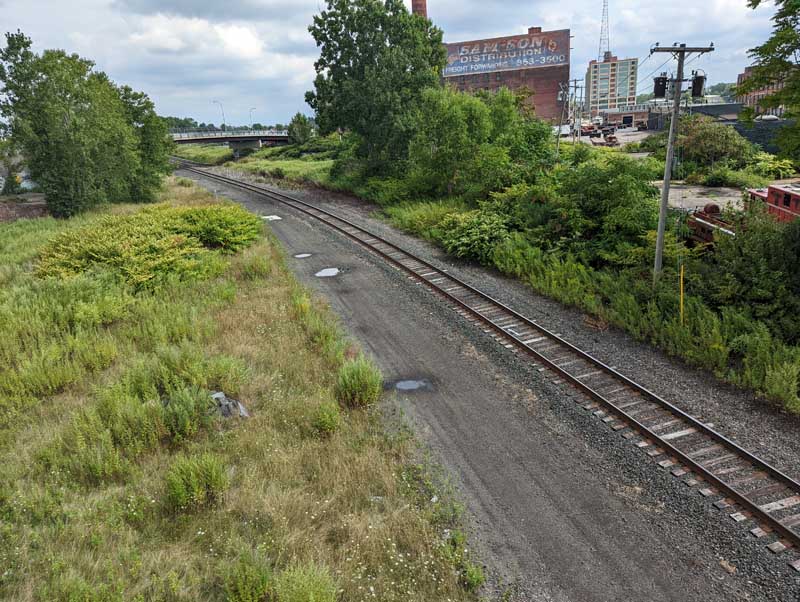
After leaving the Depew Station, we immediately passed the Attica State Prison and then passed through an endless series of small towns and villages which included farmland, forests, and marshes enroute to our sister city, Rochester. Between Rochester and Syracuse, the largest stretch of the trip, there was yet more farmland, forests and marshes. You could also interestingly see that we were traveling parallel to I-90.
After leaving Syracuse and heading to Rome and Utica, like magic, the Adirondack Mountains and the Mohawk Valley emerged. New York State was very geographically diverse and beautiful, and this was the ideal way to see it. From Utica to Amsterdam there were more small towns, villages and train yards with old, retired freight and passenger cars. There were even older broken-down structures on land and built into the sides of the some of the mountains. The Mohawk River also appeared, and we rode along its banks until the final stretch between Amsterdam and Schenectady.
“We don’t own the tracks between Buffalo and Albany. We just rent them from Conrail, and their trains get priority.” I once overheard a conductor telling another passenger why we had to stop occasionally to let the Conrail trains pass by. When we were in motion Conrail trains regularly came thundering past us. When we were headed in opposite directions I could feel our train shake. Occasionally we’d also pass westbound Amtrak trains. Along the entire route to Schenectady, there were freight train yards in each of the other cities which were once owned by Conrail and are now owned by CSX, confirming the conductor’s words.
Disembarking in Schenectady
“THE NEXT STOP IS SCHENECTADY IN 25 MINUTES,” the conductors announced walking through our coach snatching the appropriate stubs as we departed Amsterdam. “THE EXIT WILL BE THE REAR OF THIS COACH!” In some instances, announcements were made in person and in others they were made using the train’s public announcement system.
At Schenectady we disembarked from the train onto the station’s elevated platform and entered the fantasy world that was our summer visit with our father. I also liked watching the train depart so we stayed and watched it. Once the conductors took on new passengers they climbed back into their coaches, and the doors slowly slid shut; the opposite of their routine in Buffalo.
With two blows from the engine’s airhorn, the train slowly started back up and disappeared around a curve behind a building heading south to New York City. The two red lights on the last coach were the final parts of the train I would see along with the sound of the wheels on the rails. I often wondered what it was like to ride all the way down to the famous Grand Central Station.
When it was time to go back to Buffalo, we’d do the exact same thing, but in reverse. Early on I’d cry my eyes out. It was hard going back, not because I didn’t want to go back to be with my mother, but because I wouldn’t see my father again for another six months to a year. But that’s a different story. As I got older, I stopped crying. Just like the trip to Schenectady the train would disappear, but this time into the Exchange Street tunnel. The two red lights on the last coach were the final parts of the train you would see as it disappeared into the darkness.
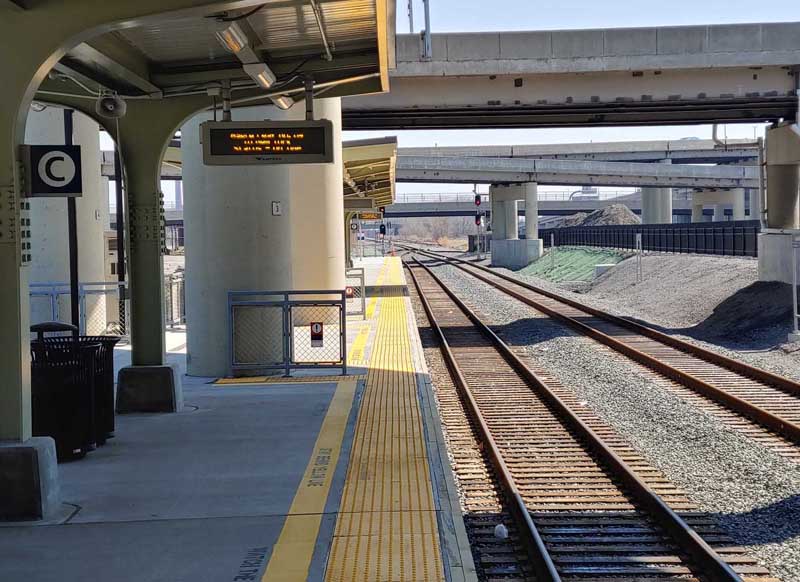
Thinking about the Empire Corridor in Buffalo
Those trains departed from and arrived at the Exchange Street Station daily. In the mornings they arrived in Buffalo on that single track and journeyed east to New York City. In the afternoons and evenings, they arrived and then departed for either nearby Niagara Falls or further north to Toronto.
Though I only got to ride on them a handful of times per year, I thought about trains regularly. I daydreamed about riding on those silver curved coaches. With my grade school being on the westside of Buffalo and my high school being downtown, I’d hear the trains announce their arrival in Buffalo. It was during the warm weather months when the windows were open when I’d hear that distinct sound of the airhorns the most. As a teen I thought about them along with basketball, girls, and peer acceptance.
Even as an undergraduate and a graduate student in states far away from the Empire Corridor, I still dreamt about travelling back and forth on it. Nothing was ever like watching those trains emerge from the Exchange Street tunnel. While more convenient timewise, air travel never compared to train travel for me personally, nor did bus rides or car rides.
Always thinking about new technologies, my brother once speculated on magnetic trains, which would hover over rails with little or no contact with the ground. In contrast, I always loved the bumpiness, the roughness, and the sounds of those rides on the Empire Corridor – the subtle sway of the cars from side to side, hearing the hydraulics of the coaches, the roughness of switching tracks; all of it.
Riding the Maple Leaf and the Niagara Rainbow
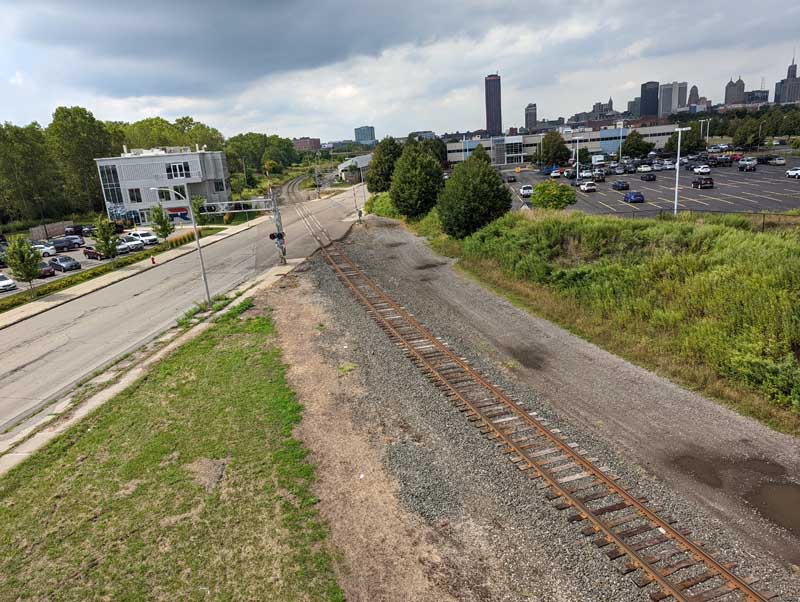
Dad took us to Schenectady on the Maple Leaf probably for scheduling purposes. Because it originated in Canada, when you boarded there were already lots of passengers on the train and they could’ve been from Africa, India or any of the countries in the Middle East in terms of diversity. Since the Niagara Rainbow started in nearby Niagara Falls, NY, it usually ran on time. And because Buffalo was its second stop, I always got my seat of choice, though the train usually filled up the further east we traveled.
As I grew older, I rode the Niagara Rainbow more often, which departed Buffalo early in the morning. Both trains had food service cars where you could choose from an assortment of items on Amtrak’s menu including cold and hot beverages, breakfast sandwiches, burgers, kosher hot dogs, potato chips and mini pizzas. When getting us, Dad often brought cold Kentucky Fried Chicken (no sides) and we’d snack on that for the five-hour journey to Schenectady. That’s right, cold Kentucky Fried Chicken.
The Empire Corridor
Oh, I got so into my story that I didn’t describe the significance of the Empire Corridor. Years ago trains were the primary mode of travel in the United States. There were numerous individual private railroads in multiple states like the multiple airlines today. Examples are the Pennsylvania, the Baltimore and Ohio, the New York and New Haven & Hartford, the Reading (pronounced Redding) and the Southern. These were just the eastern lines. Out west there was the Central Pacific, and the Union Pacific, among others.
There was also the New York Central Railroad. The Empire Corridor is basically the remains of the New York Central Railroad. It is now the New York State portion of Amtrak’s national system, spanning from Niagara Falls to New York City. You might be able to throw in the Adirondack route up to Montreal as well, but the main trunk is the route spanning from Western New York to New York City. The New York Central also extended to Chicago, Illinois and the above-mentioned Lake Shore Limited which, in a way, keeps that part of the old railroad alive to this day.
In Buffalo, the old terminal located on Paderewski Drive, off of Fillmore Avenue, is a relic of that system. Grand Central Station in New York City was once the heart of the system, but Amtrak’s Empire Corridor trains now start and terminate at Penn Station where passengers can easily connect with the electrified Northeast Corridor. Amtrak’s modern system consists of the remains of the feasible routes of the old railroads. The other parts have been sold off or dismantled altogether.
Have I ever completed the journey to New York City along the banks of the Hudson River? Yes, I have. In fact, I’ve done it several times, but I’ll cover that in another piece.
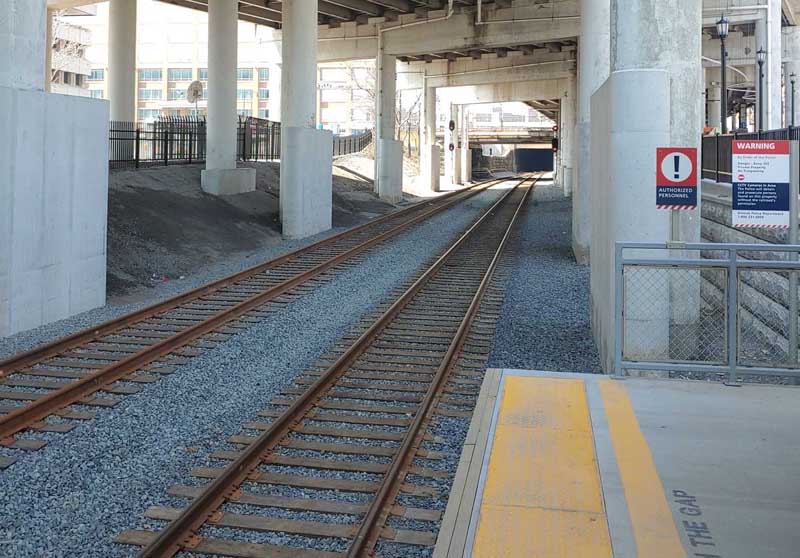
The Author’s Post Thoughts/Reflections
During those times, Amtrak also used a couple of turboliners on the Empire Corridor before retiring them due to technical issues. They were of European design and had engines on both ends of the train like the modern-day Acela Express. My brother preferred them, but I always preferred the single engine with the fleet of coaches.
In case it wasn’t evident from this piece, I know a lot about trains (laughing). They’ve always fascinated me. While in graduate school at the University of Michigan I started collecting issues of Trains Magazine and loaded my brain with more and more trivial railroad facts. Most of the articles were long just like this one. That said, there is a whole demographic of railroad enthusiasts, as is the case with everything else.
If I’ve written this piece correctly, I will have conveyed a sense of innocence to you the reader. My childhood was an innocent one, and in general, that was a much more innocent time for our country and our world compared to what we have now. Though my parents split early in my life, my father wanted to remain a visible part of my life, to which I’ll always be grateful. He did a lot of things for me including helping me develop a love for trains which has lasted a lifetime. It was something we did together, and it helped me to start to see other parts of New York State, and indeed the country, outside of the eastside of Buffalo.
Just as when I was a kid, I don’t get to ride the trains every time I take a trip, but I’m always thinking about them. Whenever I see train tracks, I wonder where they’re going and where they’ve originated from. Furthermore, before I leave this world, I’d like to ride in a locomotive just to know what it feels like. In the Washington, DC area, where I now live, commuter, passenger and freight trains are everywhere, coming and going. Nothing, however, is like the Empire Corridor.
Most of the images used in this piece are from the first decade of this century. Interestingly, I didn’t know how I would use the photographs when I first took them. Like all of the upstate New York stations, the Exchange Street station has been renovated. It’s now larger with a train-level platform and two tracks. Again, there’s nothing like that old station of bygone days.
If you’ve read this article to the end, thank you. I like to tell stories of all kinds on this platform, and before it’s all said and done, I think there will be a collection of stories specifically about trains. I’m also working on a book. If you have a moment, please check out the page for my book project The Engineers: A Western New York Basketball Story. Finally, I’m also a YouTube content creator. There’s a page on my original blog with links to each of my four channels. Regards.
RailFan76 on YouTube
I shared a channel from another railfan earlier in this post. I started my own railfanning channel entitled, RailFan76. The initial trailer I created for the channel is below. Please consider subscribing to my channel if you have read this essay to the end. I plan to make a video about the Exchange Street Tunnel in the near future.
The Big Words LLC Newsletter
Thank you for reading this piece. For the next phase of my writing journey, I’m starting a monthly newsletter. It will be for my writing and video content creation company, the Big Words LLC. In it, I plan to share inspirational words, pieces from this blog and my first blog, and select videos from my four YouTube channels. Finally, I will share updates for my book project The Engineers: A Western New York Basketball Story. Your personal information and privacy will be protected. Click this link and register using the sign-up button at the bottom of the announcement. If there is an issue with that form, you can email me at [email protected]. Regards.
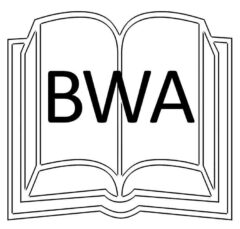
Hello all. Thank you to those of you who read this piece. It was admittedly lengthy, but I think it was worth it. I’ve loved trains from an early age and it was something my father allowed me to experience at young age.